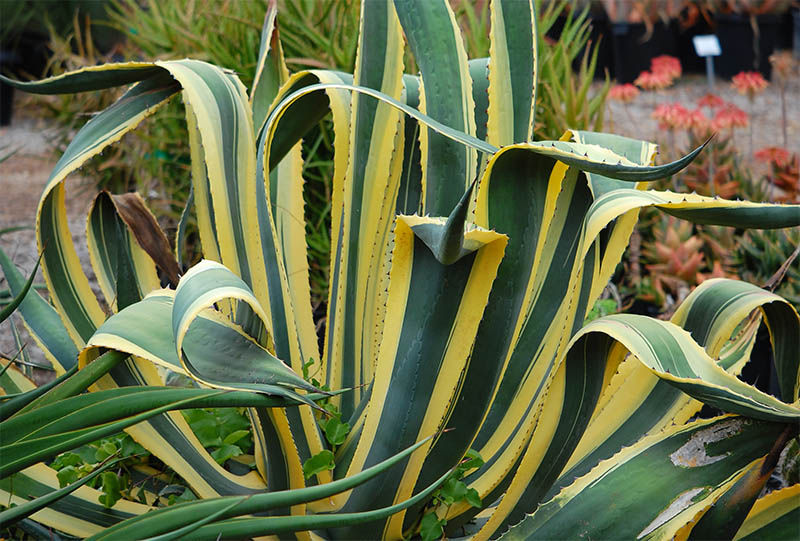Agave (Amaryllidaceae)
- garden-design-online
- Jul 18, 2020
- 3 min read
The name derives from the Greek agauós «splendid, admirable». These are succulent plants of the hot and dry American regions, originating for most of Mexico and the southern states of the U.S.A.;

Many species have however naturalized in other areas with a similar climate, including the Mediterranean area. The genus includes herbaceous and arborescent forms, some of the economic importance, among which Agave sisalana which produces the fiber called sisal, very strong and resister. All have fleshy leaves, more or long, coriaceous and ensiform, always arranged in rosettes mostly assaults, although some species become caulescent with aging; almost all have thorns arranged in various ways on the leaves (marginal or apical) and only some are unarmed. The inflorescence consists of a large spike, usually erect, which can reach 10 meters and which bears small flowers usually greenish-red and in some species also bulbous plants; these form small plants that, falling, root to the ground. In many species, the central rosette dies after flowering and seed production, but almost all emit suckers that, by rooting, give rise to new plants.
Cultivated species of Agave:
Agave americana, constitutes, together with the prickly pear, a characteristic of the Mediterranean landscape. It is often confused with Aloe; in this regard, just remember that the new leaves of the. American, springs in the center of the rosette are always born rolled upon themselves and stretch out while growing, while the central leaf of the Aloe is born with the same shape that they will keep increasing only in size. Once it was believed that the plant only flourished after a century of life, in reality, the flowering occurs after about 10 years. The var. are marginal, the most common, with the edges of white or yellowish-white leaves; medium-picta with the large yellowish longitudinal band. A. Angustifolia of the West Indies, with leaves of about 50 cm in length and only 8 cm in width; produces many suckers and there is a marginal shape with white edges; A. attenuated, one of the very few unarmed, with an aging stem reaching one meter in height, with an arched inflorescence that can produce bulbs; A. filifera, rosette of narrow leaves, bright green, with white lines along the margins that split into long loose threads; A. horrida, leaves up to m 2, wide, dark-green, with robust curved marginal spines both outwards and inside the leaf and long apical spine. It does not emit suckers; Agave parvaffiora, with a dwarf rosette and compact green leaves with white lines, crossed towards the tip and the margins frayed in white filaments; A. victoriae-reginae, low and slow-growing, with greenish leaves, catenated crossed longitudinally and irregularly by white lines converging towards the apex, and with a short but hard brown apical spine.
Cultivation:
very porous and sandy soil, sunny position, the minimum temperature for the most delicate species of about 7 ° C; rustic species resist much lower temperatures. Cultivated in pots require scarce watering throughout the year, except in winter when they must be almost completely suspended. Multiplication is usually done for suckers who are rooted in the sand; it can be reproduced, where necessary, by seed, but growth is slow and there is always the danger of obtaining different varieties and the variegated types reproduced from seed will normally turn color reversal, losing the mottling.
Since ancient times, the Mexicans have extracted from the Agave atrovirens, by fermentation, a wine called "pulque". This custom is so old that the Aztecs even had a god presiding over it; his name was Tepalcatzin which literally meant "mirror covered with straw" to indicate the sight blurred by drunkenness, but the effects of the "pulque" had to be even worse if the god's secondary names meant "the hanger" or fog-maker. "



Comments